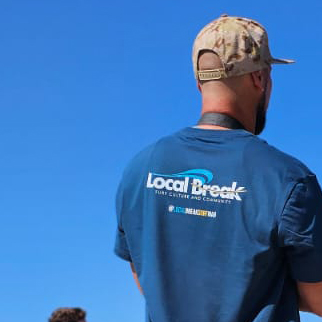Surf Nicaragua from SoCal: Part 1 of 4 — How to Get There
- Willie Daniels

- Oct 16
- 4 min read
Updated: Oct 17
Written By: Willie Daniels
*Just a heads up — nothing in this article was sponsored. No free flights, hotels, gear, or food — everything here comes straight from personal experience and chats with locals along the way. This article is written from the perspective of visiting specifically from Southern California.

Imagine uncrowded waves, warm water, and sunsets with a cold Toña in hand — welcome to Nicaragua. This underrated surf paradise has been quietly winning over surfers for years, and it’s easier to get there than you think… if you know the insider tips. In this first installment of our four-part series, we’re breaking down everything you need to plan your trip smoothly — from the best flights and seat hacks to customs tips and surfboard rentals.
The best time to go? When school is in session, so the crowds stay low. Chase south swells in April and May, or hit the ultimate sweet spot in August to September: perfect waves, minimal crowds, and not quite rainy season. Ready to start your adventure? Let’s dive in on how to surf Nicaragua from SoCal.
Surf Nicaragua from SoCal: Getting There
Most travelers headed to Nicaragua fly into Augusto C. Sandino International Airport (MGA) in Managua. For surfers coming from lower Southern California (San Clemente, Oceanside, Encinitas, Cardiff ect.) Avianca Airlines out of LAX is usually your most affordable and reliable option— but there are a few key details that can make or break your travel day.

Booking Smart
You’ll see Avianca flights listed across booking sites, but the best deal almost always comes directly from Avianca’s own website. Many third-party listings look cheaper up front but exclude checked baggage — and once you add roundtrip fees, it’s usually more expensive.
When booking through Avianca, look for the fare that includes one checked bag, a carry-on, and a backpack. That’s plenty for a weeklong trip if you pack light. If you’re able to travel with just a carry-on and backpack, you’ll save even more and move faster through airports.

Choosing Your Seat Wisely
Avianca’s planes are known for tight seat spacing, so check in early and grab a seat near the front whenever possible. You’ll thank yourself later:
Food and drinks are served front to back, so you’ll get first pick before they run out of food items, and they do run out.
Legroom is limited in the back — tight enough that you can’t even open a laptop all the way.
Most importantly, you’ll get off the plane faster during your connection.

The El Salvador Stopover
Most Avianca routes from Los Angeles include a quick layover in San Salvador, El Salvador. What catches a lot of travelers off guard is that you’ll need to go through the security process all over again before reboarding your next flight.

If you’re seated toward the back, you might spend most of your layover standing in line. Sitting closer to the front means you’ll breeze through, grab a snack, stretch, and reboard without stress.
Bringing or Renting a Board
Here’s the real talk: flying your surfboard on Avianca will cost you around $150 each way. If you’re planning a shorter stay or want to keep travel simple, you may be better off renting boards once you arrive.
Most coastal surf shops rent boards for about $15–$20 per 24 hours, and they’re generally flexible if you hang on to them for a few days. We rented boards and surfed double sessions — mornings and afternoons timed with the tides — and managed four solid surfs per rental day. The shop didn’t mind us keeping the boards between days, making it an easy, cost-effective option that left the travel headaches behind.
Arrival in Nicaragua
As you approach Managua, the flight attendants will pass out customs declaration forms — fill yours out before landing to save time. Once you land, security staff will quickly check your form before you move through customs. There will be a $10 entry fee for each person you're traveling with (worth it!).
A few things to know before you pack:
No drones — they’re not allowed and will be confiscated immediately.
New, unopened items can trigger import duties. Remove packaging and price tags if you want to avoid unnecessary fees or delays. (Ask me how I know.)
After customs, your bags will be X-rayed one last time, and then you’re free to start your adventure.
From the Airport to the Waves
From Managua, it’s roughly a two-hour drive to most surf zones on the southwest coast. You can rent a car or book private transport, depending on how much exploring you want to do.
Small rental cars run about $25 per day, but expect a $500–$600 insurance hold on your credit card.
If you’d rather keep things simple, stay at Café con Leche, where owner Manny can arrange private airport transfers for around $100 each way for your whole group (up to 4 - price can be adjusted for more riders). It’s a comfortable, hassle-free option that gets you straight to the coast without having to navigate on your own.
Final Thoughts
Getting to Nicaragua isn’t hard — but knowing the small details makes it a whole lot smoother. From smart booking and seat hacks to saving on board fees and cruising through customs, a little planning goes a long way.
Once you’re through the airport, it’s all about warm water, glassy mornings, and endless waves. Stay tuned for Part 2: Where to Stay, where we’ll dive into the best surf lodges, boutique hotels, and hidden gems that make Nicaragua one of the most relaxed — and rewarding — surf destinations in Central America.



Comments